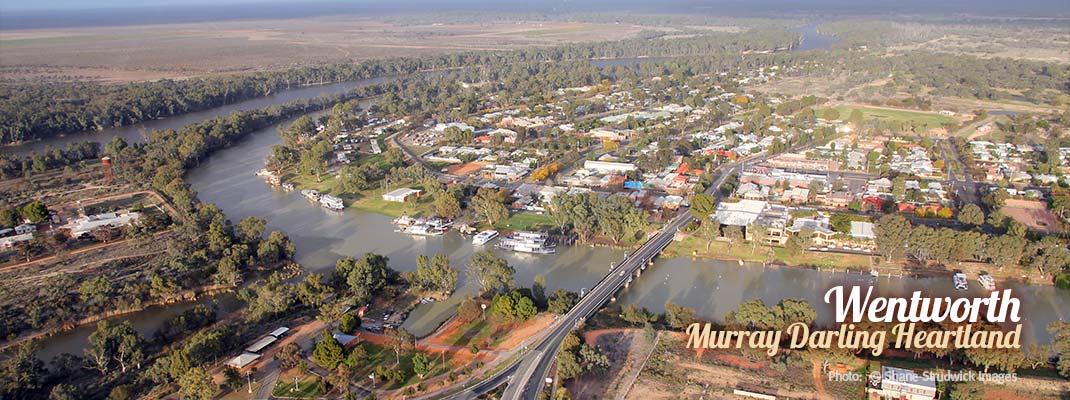Wentworth
Wentworth sits on the junction of Australia’s two mightiest rivers – the Murray and the Darling.
It is the administrative centre of the sprawling Wentworth Shire, one of the largest municipalities in New South Wales, encompassing an area of 26,500 square kilometres or 2,616,926 hectares.
Captain Charles Sturt discovered the junction of Australia’s two mightiest river systems – the Murray and Darling – in the 1830’s paving the way for what was to become the thriving river port town of Wentworth.
The overlanders followed the explorers, using the routes along the river the drive their cattle to the Adelaide markets. The trail along the Murrumbidgee and Murray Rivers became so popular it became known as the Sydney/Adelaide ‘highway’.
The junction stopover at the Murray/Darling junction became an established camp known as Hawdon’s Ford.
Then came the squatters, establishing illegal reign over the land along both the Darling and Murray Rivers, expanding their holdings westwards from the blossoming Murrumbidgee grazing area and, at the same time, northeast from the South Australian settlements.
By the mid-1840’s the junction settlement had become “McLeod’s Crossing”, named for the first residents of the fledgling settlement.
With the arrival of the river steamers in 1853, the small hamlet found itself ideally situated as an administrative and commercial centre for the untapped wealth of the vast outback.
For many years Sydney and Newcastle were the only ports in New South Wales to handle more cargo than Wentworth as the steamers brought a new sophistication to the rugged river towns. They carried the hopes and dreams of the communities they served for more than three quarters of a century.
Wentworth became a town on June 21, 1859, named for the New South Wales explorer and politician William Charles Wentworth.
The area was proclaimed a municipality on January 23, 1879.
Wentworth Shire suffered extremes in fortune throughout the prosperous river trade days. The area endured flood, drought, rabbit plagues and less natural disasters like overstocking which in turn caused erosion and land degradation.
Despite the odds, the area continued to thrive and grow at a reasonably rapid pace.
The first irrigation settlement was established at Curlwaa, seven kilometres east of Wentworth, in the late 1880’s.
By 1929 a series of locks and weirs had been established on the Murray River, bringing with them a certainty of water supply that was vital for navigation and irrigation.
Irrigation breathed a new life into the district and the subsequent expansion of the project led to pastoral properties being sub divided into smaller allotments (referred to as ‘blocks’).
This in turn enabled a huge upsurge of development resulting in the production of high quality fruits and vegetables for which the area remains highly regarded.
An improved system of road networks, State-wide rail links and motorised transport reduced the need for riverboats as a source of transportation; communication and trade, thus sounding the death knell for the paddleboat era.

